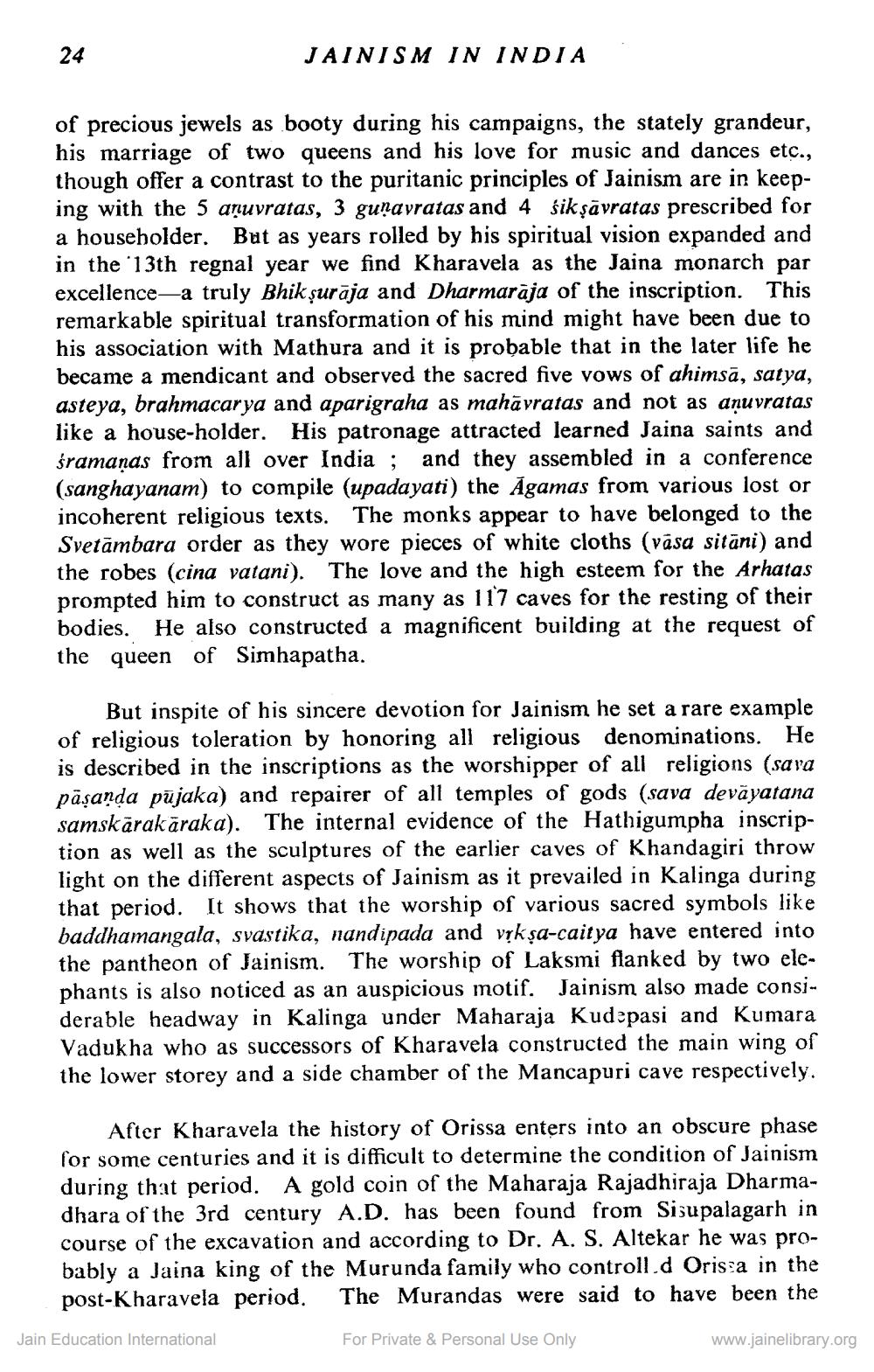________________
JAINISM IN INDIA
of precious jewels as booty during his campaigns, the stately grandeur, his marriage of two queens and his love for music and dances etc., though offer a contrast to the puritanic principles of Jainism are in keeping with the 5 anuvratas, 3 gunavratas and 4 śikṣāvratas prescribed for a householder. But as years rolled by his spiritual vision expanded and in the 13th regnal year we find Kharavela as the Jaina monarch par excellence—a truly Bhik șurāja and Dharmarāja of the inscription. This remarkable spiritual transformation of his mind might have been due to his association with Mathura and it is probable that in the later life he became a mendicant and observed the sacred five vows of ahimsā, satya, asteya, brahmacarya and aparigraha as mahāvratas and not as anuvratas like a house-holder. His patronage attracted learned Jaina saints and śramaņas from all over India ; and they assembled in a conference (sanghayanam) to compile (upadayati) the Agamas from various lost or incoherent religious texts. The monks appear to have belonged to the Svetāmbara order as they wore pieces of white cloths (vasa sitāni) and the robes (cina vatani). The love and the high esteem for the Arhatas prompted him to construct as many as 117 caves for the resting of their bodies. He also constructed a magnificent building at the request of the queen of Simhapatha.
But inspite of his sincere devotion for Jainism he set a rare example of religious toleration by honoring all religious denominations. He is described in the inscriptions as the worshipper of all religions (sara pāşanda pūjaka) and repairer of all temples of gods (sava devāyatana samskärakāraka). The internal evidence of the Hathigumpha inscription as well as the sculptures of the earlier caves of Khandagiri throw light on the different aspects of Jainism as it prevailed in Kalinga during that period. It shows that the worship of various sacred symbols like baddhamangala, svastika, nandipada and vşkşa-caitya have entered into the pantheon of Jainism. The worship of Laksmi flanked by two elephants is also noticed as an auspicious motif. Jainism also made considerable headway in Kalinga under Maharaja Kudepasi and Kumara Vadukha who as successors of Kharavela constructed the main wing of the lower storey and a side chamber of the Mancapuri cave respectively.
After Kharavela the history of Orissa enters into an obscure phase for some centuries and it is difficult to determine the condition of Jainism during that period. A gold coin of the Maharaja Rajadhiraja Dharmadhara of the 3rd century A.D. has been found from Sisupalagarh in course of the excavation and according to Dr. A. S. Altekar he was probably a Jaina king of the Murunda family who controll.d Orisa in the post-Kharavela period. The Murandas were said to have been the
Jain Education International
For Private & Personal Use Only
www.jainelibrary.org




